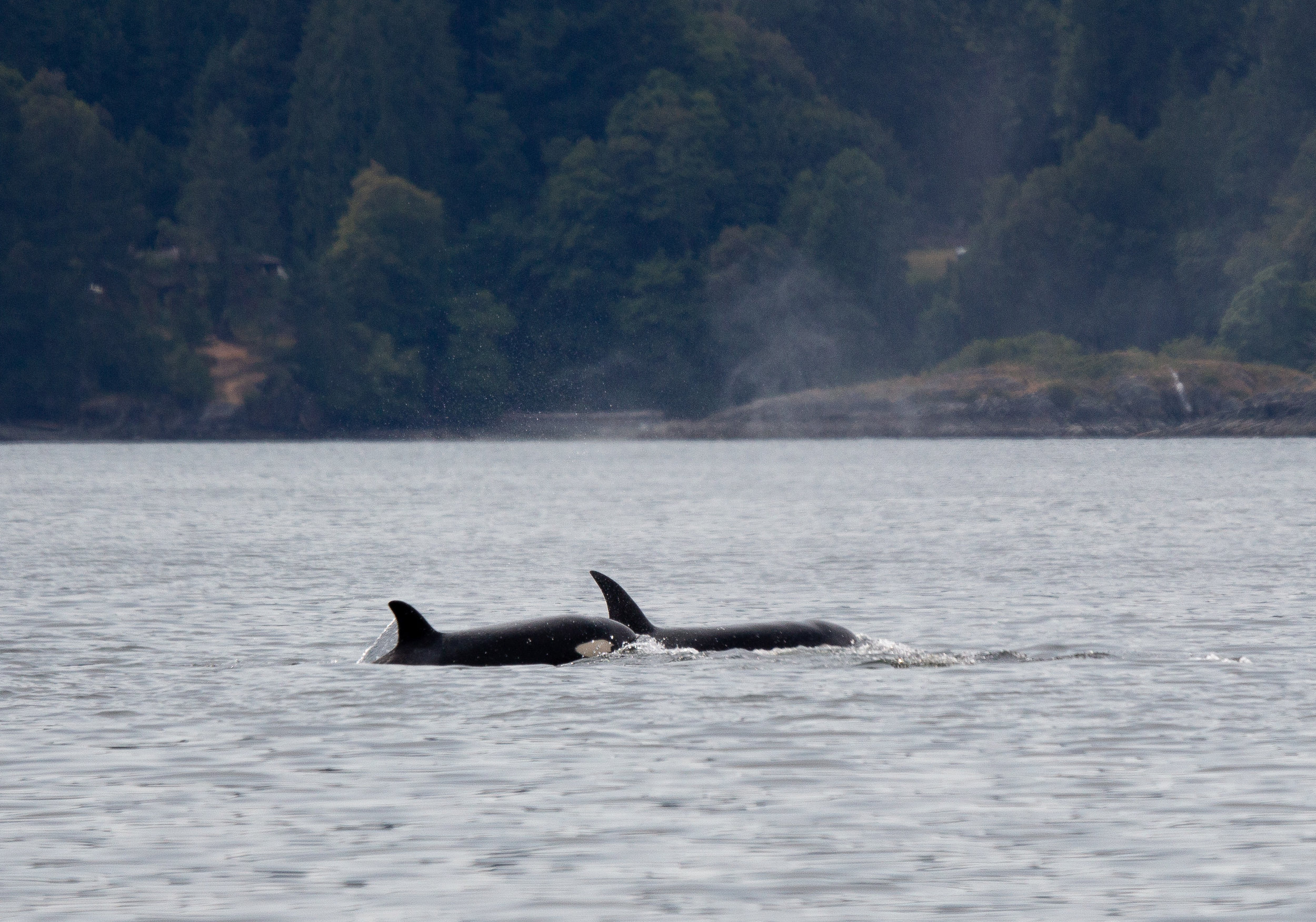June 6th - T77's traveling in the Southern Gulf Islands
On Wednesday we set out to see a pod of transient orca that were making a trip across the border from the United States into Canadian waters. There we saw the T77's, a group of five killer whales. The pod consists of T77, Asja, and her four offspring T77B, T77C, T77D and a young calf.
T77B "The Church" is by far the largest in the pod but is roughly 20 years younger than his mom. Photo by Natalie Reichenbacher
You may be wondering how we know which whales we're watching. Identifying whales can be simple as long as you have the right tools. Every individual whale can be identified by either the dorsal fin or the saddle patch. The saddle patch is the grey patch that is found behind the dorsal fin on orca. The patch may have specific shape that may be used for identification or it will have scars on it which are unique to each individual whale. The size, shape, and any nicks or bends in the dorsal fin may also be used to identify the whales.
Check out the little eye patch on the juvenile! Photo by Natalie Reichenbacher
Dorsal fin size in orca vary between genders with the males having much larger fins than the females, up to 6 feel tall! With such a large structure you may be surprised to learn that there is no bone holding the fin straight but rather the support comes entirely from collagen. Collagen is a fibrous connective tissue that makes up a lot of structures in our bodies, such as our ears and noses.
And here an adult peeks it's eye out of the water. Photo by Natalie Reichenbacher
The function of the dorsal fin still remains unknown although there are many theories about what purpose they serve. Some speculate that the fins serve to increase the hydrodynamics of the whales allowing them to swim through the water more easily while another popular theory is that they help the whales with thermoregulation (maintaining their body temperature) by providing a larger surface area for heat exchange. Likely it is a combination of many factors.
Photo by Natalie Reichenbacher
Photo by Natalie Reichenbacher
The structure of the dorsal fin is thought to be maintained through water pressure as they dive for food and travel through the water. In captivity the dorsal fin of male orca are collapsed, or bent over, in 100% of the whales whereas in the wild populations have only 1% of males with this condition, typically only if they have health issues or have been entangled in fishing gear. This is thought to be because when in captivity orca spend a lot of time at the surface and they cant go for deep dives so the water pressure isn't there to support the dorsal fins. Watching these animals in their natural habitat where they are free to travel and grow is an amazing experience and we cant wait to see what this family of whales has in store for us in the future.
Photo by Natalie Reichenbacher






